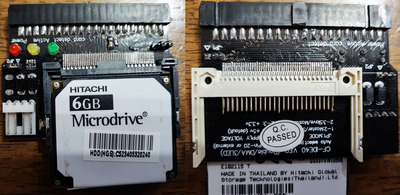First post, by aitotat
I've been trying to fix MG -1886 motherboard. It has 33 MHz AMD 386sx and Headland HT18/F chipset. It had some minor corrosion caused by battery leakage. That was easy to neutralize and fix since no trace was lost. But the board didn't work at all after that. Next to HT18 there was something that first looked like factory fixes and perhaps the varnish was wearing off. But close pictures looked like something was dropped there and causing cossorion. There were at least one trace broken and two or three next to it looked suspicious. I fixed them all and the board came to life but always stopped at graphics card error beeps. Eventually I found out that 8-bit VGA card does work! I tested three different 16-bit VGA cards and none worked.
So lots of troubleshooting what is wrong with 16-bit ISA. And I could not find anything, no matter how hard I tried to look and test. All traces seemed to be okay. I even tried to resolder HT18 with hot air but nothing changed. I replaced electrolytic capacitors but that did not change anything. I could not find anything wrong.
Last idea was to try 16-bit I/O card and see how IDE behaves. Very well since it works perfectly. I can boot without problems etc. But 16-bit VGA is a no no. So we can now be sure that at least data lines on 16-bit connector work just fine. And so does IO CS 16* pin. What the VGA has and I/O card doesn't are address pins 17-23 and MEM CS 16*. MEM CS 16* can be traced to HT18 without a problem and so does the address pins. And to CPU as well, except A20 that needs to go through the GATE A20 stuff. But all related pins on HT18 seem to be fine as well.
I mentioned that the ISA A17-A23 can be traced to CPU as well. That is exactly so. They (A20 excluded because of the GATE A20 pins) simply split to CPU and HT18. Nothing between. HT18 datasheet mentions there should be buffers between, F573 or F245. And indeed, after looking other HT18 mainboards on retro web it seems that other boards seem to have them. But they all seem to have HT18 rev A, B or C (just like the datasheet is). But this MG has revision F. Does it not need the buffers?
Other than the missing buffers I have no other idea at the moment. I tested the board with 16MB RAM (max that 386sx supports) and memtest successfully passed the (long) test. So at least connection to RAM works perfectly. I just cannot believe that a late 92 mainboard would not support 16-bit VGA!
Edit: Here are some pictures.

